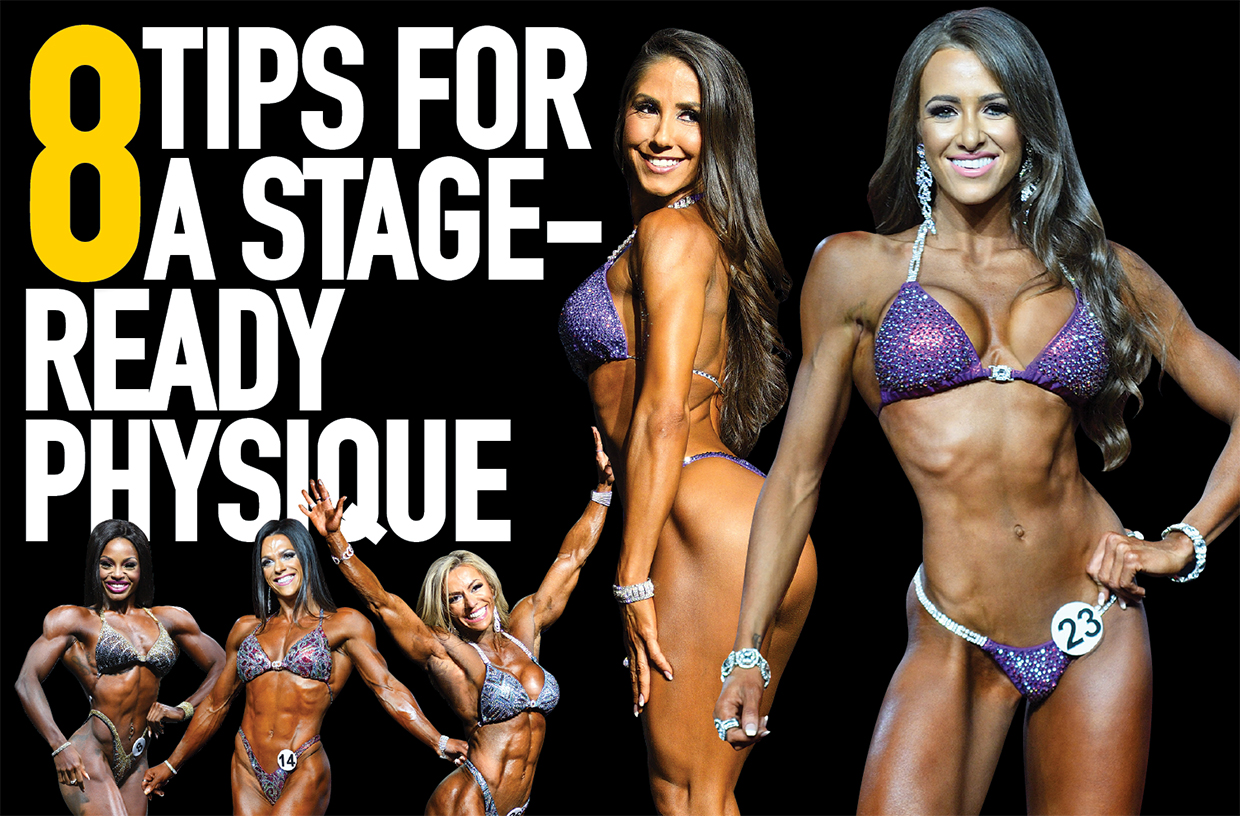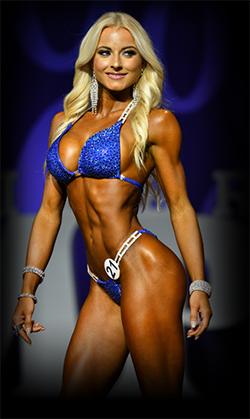8 Tips For A Stage-Ready Physique

When you decide to take on the challenge of competition you need to master many areas of discipline and perfection. But once you have your training, diet and transformation all figured out, you can’t forget the aspect of refining your hard work. As a competitor, I know the importance of feeling comfortable and confident on stage. I've also seen many competitors fall victim to a last minute scramble when they fail to work on their stage presentation. Not only can this add stress and sabotage your training, but it can make you second guess yourself.
Here are a few tips you can follow to help you with your suit design and selection:

1. DO YOUR RESEARCH
Always look online for ideas for design options. Start with a Google search for terms like "competition suits/ bikini," "fitness suits," "posing suits," "figure suits," "used or competition suit rental." Make sure to specify Canada or the US. Look for suits that complement physiques similar to yours – get an idea of what you like and always go with your first instinct on colour. If you aren’t sure of what looks good on you, ask for opinions and trust your designer’s suggestions.
 2. FIND A DESIGNER
2. FIND A DESIGNER
The best way to find a reputable suit designer is word of mouth. Get feedback. Talk to other competitors and fitness trainers, attend show-specific clinics and expos, and search competitor Facebook profiles. Try to meet or speak with the designer in person – you will feel more comfortable if your designer knows your personality and understands your vision. I suggest finding your designer months in advance to ensure they complete your suit on time. Your designer should be easy to work with, and you should be happy with the final results.
3. DECIDE YOUR BUDGET
The price of suits can range depending on what you’re looking for – every designer is different, so make sure to ask for a quote. Obviously, Bodybuilding suits (pre-judge) are the least expensive because they are designed without the bling. The night show suits can increase in price when embellishments are added. Women's Bodybuilding suits usually run $150 to $200; and for men, about $50. Figure and Physique suits are the most expensive due to required style and need for bling. They can range anywhere from $400 to $2000. The suits you see on the Pro level circuit are extremely intricate and are usually covered in Swarovski stone work. Bikini and Fitness model suits can range from $200 to $400. It really depends on what design you are looking for. The more embellishment you want, the higher the cost. Always speak with your designer about cost up front so you know what to budget. Most designers will work with you to make a suit you love and can afford.
4. SECOND-HAND OR RENTAL?
Many competitors will sell their used suits or rent them. This option may work to your advantage if you want to cut some costs as suit rental prices can range from $80 to $200. But be aware that renting or purchasing a previously worn suit may not compliment your physique. Those suits were custom made for someone else and can also suffer damage from tan staining, and loss of stone work. While they might save you money, it may not be worth it if the fit is poor. Plus, you may be expected to cover the cost if your rented suit needs repair or replacing due to regular wear and tear.
 5. BE CAUTIOUS WHEN ORDERING ONLINE
5. BE CAUTIOUS WHEN ORDERING ONLINE
Most designers offer online ordering where you can submit a picture of your physique and complete a measurement form before paying for your order. Make sure your measurements are correct, and that you've chosen an original design. Whenever possible, competitors should meet with their suit designer for a final fitting so that they can make necessary alterations. When a suit is “custom made” to your measurements, it should fit properly (always ask what the policy is for a suit that isn’t satisfactory). If you are ordering a generic size from an online site, the price should be less than a custom made suit. Generic size suits (i.e., small, med, large), are based on a size chart that may or may not work with your specific body type. Be cautious when ordering this way. You may think you are saving money at first, but if you need to have alterations done you'll have to pay for them. Google search "competition suits" and browse through the sites to find images of the designs that are offered. Order early so that your suit arrives in time for the show.
6. BE BOLD
Pick a colour that pops on stage and reveals your personality. If you feel good in your suit, it will show on stage. You want to stand out, and shine. Plan your fitting four weeks out from your competition, and confirm that your designer will make any final alterations, if needed, closer to show time. Be sure to voice any concerns about the fit, colour, and design of your suit.

7. FOLLOW THE RULES
Each organization has its own rules and regulations. Always provide this information to your designer and confirm that they will follow these guidelines. Keep your suit tasteful and professional.
 8. PRACTICE, PRACTICE, PRACTICE
8. PRACTICE, PRACTICE, PRACTICE
Make sure you get your suit in time to be able to practice your posing routine. The last thing you need is a wardrobe malfunction on stage. I would suggest two weeks out from competition if you are practicing a routine (bodybuilding, physique). Most competitors can practice quarter turns in fitted clothing or a bathing suit they already own. You physique changes quite a bit in the final four weeks, so you want your suit to fit perfectly at the final week leading up to the show. A good designer usually has their clients' suits ready the week before a show unless they ask for an earlier completion. If you are ordering online, make sure your suit arrives a few weeks before so that any necessary alterations can be made.
With the outcome of your hard training in the hands of the judges, you need to show them how proud you are of what you have achieved. Your sculpted physique, flawless tan, perfect hair and make-up are important, but so is an impeccable posing suit.



